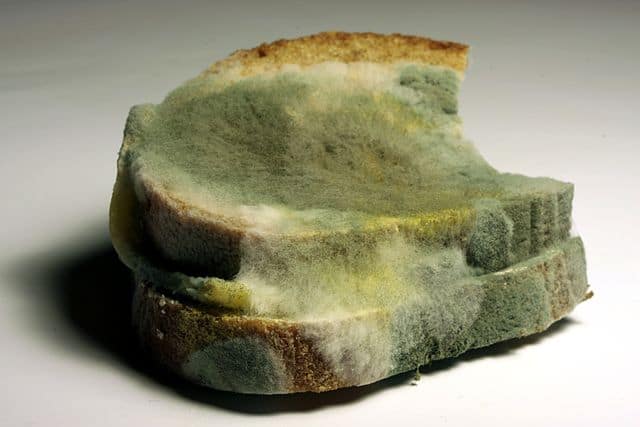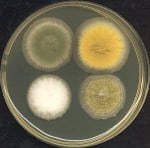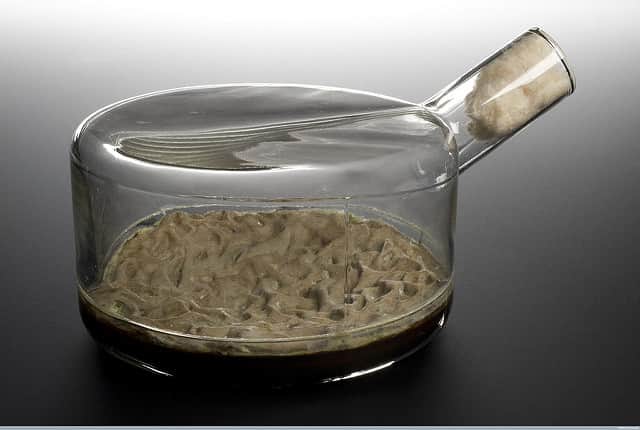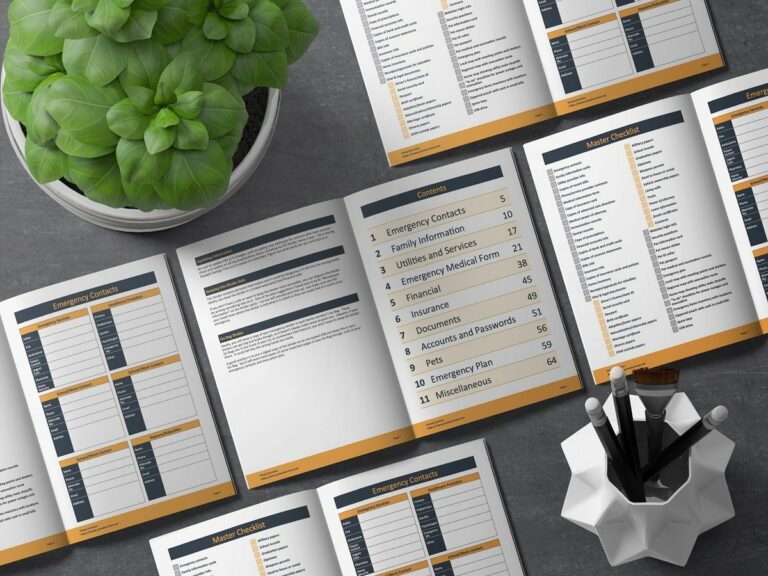One of the hottest topics in the prepper and survivalist world is how to make penicillin at home.
Because penicillin is “just mold bread” and was discovered by accident, it might seem like it would be pretty straightforward. Yes, it is – but making penicillin safely is complex. If you want to learn how to make DIY penicillin, here’s what you need to know.
Making Your Own Penicillin
Step 1. Isolating Penicillin Bacteria
Put a piece of bread, cantaloupe, or citrus fruit in a container in a dark place at 70 degrees F. It should be in a closed (but not airtight) container. It helps to add a few drops of water to the container and leave all but one corner closed to keep in moisture.
It can take weeks for the mold to start growing. Hopefully, you aren’t trying to treat gangrene with your DIY penicillin because your patient will likely be dead before you get any usable spores.
The bread or fruit will start getting a gray mold. This gray mold will eventually turn a bluish-green color. This is the mold that you want for making penicillin!
Note: You’ll want to use homemade bread because most commercial bread contains additives to inhibit mold growth.
Step 2. Re-culturing the Penicillin

The greenish-blue mold you grew contains penicillin. Some call this mold “natural penicillin” and say you can use it immediately. Unfortunately, this isn’t the case.
Does NOT Work:
- Rubbing Mold Onto a Wound: Rubbing penicillin mold onto a wound might treat surface bacteria but won’t help much if the bacteria has already spread into the bloodstream.
- Drinking Mold Tea: The penicillin derived directly from mold is very sensitive to stomach acid. If you drink it as penicillin tea, it will be destroyed before it enters your bloodstream. The only way to make this penicillin work is to inject it (not recommended!).
To get the benefits of penicillin from mold, it has to be further cultured.
- Thinly slice 200 grams of unpeeled potatoes.
- Put the potatoes into a 1-liter mason jar and fill with distilled water. Screw on the lid tightly. Put the entire jar into a pot of boiling water. Boil for 30 minutes.
- Once it cools a bit, open the jar. Strain the contents through a cheesecloth (sterilized lace curtains work in a pinch). Catch the liquid! This is the “broth” that you need.
- Add 20g of glucose (aka dextrose) to the broth. If you don’t have glucose, plain sugar will work.
- Add 20g of agar to the broth. Plain gelatin (not Jello) will work if you don’t have agar. Note that the agar isn’t going to dissolve completely. That’s okay.
- Add distilled water until the total volume is 1 liter.
- Pour the broth into wide, flat jars with a sealable lid. Basically, anything that could work as a petri dish. If you actually have Petri dishes, then use ’em!
- Cover the dishes immediately to prevent microbes from the air from getting into them.
Step 3. Streaking Your “Petri Dish”
Now, it is time to move your penicillin mold spores to your “Petri dishes” with the potato broth.
There is a very specific method that scientists use for growing cultures. It is called “streaking.”
- Get a thin piece of wire. Bend the tip into an oval shape.
- Sterilize the tip of the wire in a flame. It should be red hot.
- Dip the hot wire into the potato broth to cool it down (so the heat doesn’t kill your penicillin spores).
- Now touch the wire tip to the greenish-blue penicillin mold.
- Make three lines on your petri dish. This is where the colonies of penicillin will start growing.
Step 4: Let Your Penicillin Grow

Keeping it covered, let the penicillin grow in your DIY Petri dishes for about a week.
Penicillin is a yellow color.
However, other species of bacteria can also be yellow, so it is hard to tell that you got penicillin without a trained eye and a microscope.
Step 5: Fermenting Your Penicillin
Here is where things get a bit complicated. You need to ferment your penicillin spores so they reproduce in huge numbers. Otherwise, it will be like putting out a forest fire with a bucket of water.
At most prepper websites, they tell you to get a bunch of weird ingredients like potassium monophosphate and sodium nitrate. That method works – but I doubt you will find those things lying around when SHTF.
Here’s a more straightforward method of fermenting penicillin.
Supplies
These ingredients are all available on Amazon (click the images to view prices)
Instructions
- Sterilize the flask in the oven at 315 degrees F for one hour.
- Put 1 tsp each of glucose, yeast, citric acid, milk powder, and sea salt into your graduated cylinder.
- Fill the cylinder with water until it reaches the 100ml mark.
- Pour the contents into your flask.
- Put the lid on and shake until the contents are dissolved.
- Add your penicillin cultures to the flask. Ensure you use sterile methods, such as a sterilized metal loop, to add the cultures!
- Cover the flask with sterilized aluminum foil. This will keep unwanted microbes out of the flask while still allowing for airflow.
- Let the flask sit for at least 7 days but no longer than 14 days.

Step 6: Extracting the Penicillin
After a week, you’ve got fermented penicillin in the flask.
You’ve got to get out all the other ingredients before you can use it.
Instructions
- There are going to be solid parts in the liquid. You need to separate these from the liquid. The liquid is the part that contains the penicillin, so you want to hang on to it!
- Strain the penicillin liquid through a coffee filter or sterilized cheesecloth. Catch the liquid in a sterile container.
- Now, you need to adjust the pH of the penicillin. Add a drop of hydrochloric acid and then test the pH. It will probably have a pH of around 5 when you start. Keep adding drops and testing until you get a pH of 2.2.
In theory, you could use this extracted penicillin now. However, the penicillin is very unstable.
You’d have to use it right away. Since most infections need multiple rounds of antibiotics to treat, your efforts would be for nothing.
Thus, you must do the fairly complicated and scientific step of further extracting the penicillin.
Supplies
Step 7: Further Extraction
Ethyl acetate is used to completely extract pure penicillin.
The penicillin dissolves into the ethyl acetate. Then, the ethyl can be evaporated, leaving you with pure penicillin.
Instructions
- Chill ethyl acetate in a freezer.
- Mix the cold ethyl acetate and penicillin liquid in a separator funnel.
- Shake them together for 30 seconds, then allow them to separate again. The ethyl acetate will sink to the bottom.
- Open the separator funnel and allow just the ethyl acetate to slowly drip out into a sterile collection container (a mason jar works for this).
- Now add potassium acetate to the ethyl acetate. You’ll need about 1g of potassium acetate for each 100ml of solution.
- Leave the solution uncovered in a ventilated area. The ethyl will evaporate, leaving behind penicillin.
Supplies
Using Your Homemade Penicillin
You’ll note that we started with about 100ml of fermentation. You’ll probably only get about 100mg of penicillin from that amount.
Considering that the penicillin dosage for treating strep throat is 125-250mg, taken every 6-8 hours for 10 days, you’ll need a lot of homemade penicillin to treat an infection!
Alternatives to Homemade Penicillin
Most doctors won’t prescribe antibiotics “just in case.” Even if they did, those antibiotics can be costly!
A better alternative is to use fish antibiotics, which currently don’t require a prescription, are cheap, and easy to get.
“The Mold Rush” (CC BY-NC-ND 2.0) by Los Alamos National Laboratory
“Von Henry Mühlpfordt – Eigenes Werk, CC BY-SA 3.0, LinkBy Adrian J. Hunter
– งานของตัว, CC BY-SA 3.0, Link
















As someone intimated, the government did make fish antibiotics unavailable. Tetracycline and its derivatives seem to be available, but has a short SHTF situations. The government seems to be continuing to limit access, so doubt much, if anything will be available in the future. Best option might be to contact a friend who is visiting Mexico for a vacation.
Read: Tetracycline has a short lifespan, and degrades to dangerous byproducts, so not really useful to stockpile for SHTF situations
Have I read that penicillin is ineffective against Yersinia pestis, and that you want something like tetracycline? And tetracycline comes from soil bacteria that are also found in chicken’s throats? Could you make tetracycline, or another antibiotic that’s effective where penicillin isn’t, in a kitchen?
If you knew how, do you think you could have made an antibiotic effective against Bubonic plague with medieval kitchen tech? You could probably sterilize glazed ceramics. Sealing them against air intrusion might be fun … .
SHTF situation, of course, and strictly hypothetical. I’ve long wondered if they could have treated the 13th and 16th century plagues, if they’d known how, with the utensils and chemicals available then.
To ingest it, there are several ways to make pills but easiest is simply a filling an empty gelatin capsule with 250 mg of the purified penicillin. But I would never let a patient risk their life on homemade penicillin. And you need so much for any real infection that you really can’t make it at home – you need a rather large laboratory with plenty of space. Even a pediatric dose of 250 mg four times a day for a week is SEVENTY TIMES the 100 mg reportedly prodiced by following this article! And double that for adults, maybe triple since sometimes I prescribe a ten-day supply of antibiotics, depending on the location of the infection, and how easily blood-borne antibiotics can saturate the infected tissue. BLOOD BORNE ANTIBIOTICS ARE NOT ENOUGH TO CURE AN ABCESS. IT MUST BE DRAINED. Add to that the fact that penicillin is great for some infections but won’t touch others, even without antibiotic-resistant superbugs. For example, gram-positive bacteria are more likely to be killed by penicillin (which comes from bread mold, not another bacterium unless that bacterium was genetically modified to produce penicillin) but gram negative bacteria often don’t respond to penicillin. Gram negative or positive refers to whether bacteria will hold a particular dye which improves visualization under a microscope. Seriously, this article isn’t going to help survivalists stay alive without far more space, equipment, and, yes, preparation is involved. We are talking thousands of dollars of equipment here, just to be able to produce enough penicillin for a single person with an infection that can be treated adequately with oral penicillin (which I’m going to abbreviate as PCN from here on). As for buying your drugs from a pet store or feed store… it’s not genius. First of all, the DEA is well aware of what drugs are available for pets and livestock – they don’t impose controls anywhere as rigid on the stuff I put in my tropical aquarium (I am a physician whose hobby is breeding tropical fish) as they do on medications intended for human use. For example, if you buy a 500-mg capsule of PCN for human use, you are getting 500 mg. But if it’s for my fish tank, it could be less than 250 mg of PCN, and not produced under such careful conditions, and the rest less active compounds. You’re far more likely to DEVELOP allergies from taking the impure stuff. Also, PCN for humans is extremely cheap. The person who wasted $50 on 100 10-mg pills meant for fish wasted a lot of money. That $50 for just ONE GRAM of PCN? You can buy ten times that at a pharmacy for under five bucks without insurance! And you’d need 7-10 times that to treat, say, strep throat in an adult. So please, I beg you, leave the medication to the professionals. We spend many years in school and training just learning how to treat people and their illnesses without killing them! I spent four years in college studying chemical and biomedical engineering, another four years in medical school, and four years in residency. You think you can read a couple of articles to know how complicated the world of infections can be and how to treat them properly? You’re not likely to live longer after any possible SHTF situation on a strict DIY protocol. You need experts who know what they are doing. It sounds like most of the people herein giving advice are the blind leading the blind. Not all; but many. These comments had me horrified at what you are likely to do to create superbugs (bacteria resistant to multiple antibiotics), and the people who pointed out that incomplete treatment will cause antibiotic resistant strains are absolutely correct! As are the dental professionals above about the need to remove the nidus of any infection, or it will simple keep recurring – and become a chronic, drug-resistant infection like several I have seen cost patients limbs, if they are lucky, and lives if they aren’t. When infection spreads to bone it’s called osteomyelitis. And need weeks or months of strong intravenous antibiotic therapy, often from multiple antibiotics used concurrently. And osteomyelitis can kill you. So… Please. Please. Don’t treat yourself if you aren’t a fully trained professional. Licences are needed to practice medicine, nursing, dentistry, and veterinary care for VERY good reasons!
I agree with your concerns– but this article is strictly for SHTF senerios, where likely a doctor or any proper medical treatment would be unavailable. In a situation like that– fishmox( fish amoxicillin) would likely be better than no treatment at all. I bought 2 bottles a while ago. It was 15$ for 200 pills. I have never used them, and I’m well aware they will begin to loose potency after sometime- but again, something is better than nothing in a SHTF scenerio. Which is what this article is about.
Hi. Your correct, Doctor. There will be situations where all the best routes of obtaining, rotating life saving drugs just isnt an option.
David, I hear what you’re saying & agree to an extent as a person with a medical background myself. But after the COVID plan-demic, a whole slew of people have little to no trust anymore in the medical establishment after so many died needlessly over the almighty dollar given freely to the medical establishment by the government (and paid for by us). If you are not familiar with what I’m talking about, you haven’t been looking at the right news sources & peer reviewed information, that was heavily suppressed during that time (and still is to an extent).
I would love to get an emergency supply of ‘human’ meds for emergency use, but the powers that be don’t recognize the preparedness mindset, and unless you have an understanding physician (who would be technically violating current law in most likelihood), we only have what we have, and that’s why I & others have resorted to pet meds. And if you research that, in many cases it’s exactly the same product, including the manufacturer.
Again, this is as a last resort, as in ‘you’ll likely die’ or have serious bodily damage anyway if something is not done. If you die, you likely would have been dead anyway without it. Having a physician in your close circle would be a big plus for us obviously, but most are not that fortunate. Hopefully, none of us will have to use our stash, but considering the times we’re in, it at least gives a little peace of mind, even if it isn’t perfect.
Please be aware.. some ppl are allergic to Penicillin. Those that have celiac’s disease should not take it either.
It was a Sunday. on a trip to Washington State driving down the highway in the middle of nowhere I have suffered a tooth abscess. Pain is unbearable and adjust minutes had grown at Large as a tennis ball. As luck would have it I was driving by feed store. Amoxicillin by the gallon for pigs $100. Best Buy in my life.
I bought a penicillin bacteria culture online. It cost me $20. It’s the most effective strain. I’ve been working with it for about a month. Ive had little success with the fermentation process described here so I made my own. For ever 200 ml of distilled water add 12 ml of 100% saturated water with 16-16-16 fertilizer. 3 TSP of lactose monohydrate. 1/3 TSP of glucose monohydrate. Stir until dissolved. Add your culture. Aerate with a fish tank air stone. Then wait 12 days. The culture will grow fast. Soon you won’t even be able to see through the solution.
Follow the rest of the steps. With one exception; the acetate will float on top, not sink to the bottom.
Cheers and good luck!
Some forty years ago I was reading about the history of penicillin. According to the book they decided to find wild penicillin bacteria again but it took a long time to find and efficient one. If it is true, than the description above might not work. Can you please give your opinion on that?
I’m not enough of an authority on the topic to give an opinion, but it does seem plausible. In any case, there’s a LOT that can go wrong when trying to make your own penicillin. This is the type of info that’s good to have on hand in case SHTF but hopefully we will never, ever need to use!
Since penicillin is sensitive to stomach acid I wonder if reducing or neutralizing said acid would help you skip the last steps. Like taking bicarbonate or antacid prior to ingesting the liquid form.
Dr. Stone aka Senku did not make penicillin, Instead he decided to make sulfa drugs
Please specify how much penicillium culture you added to the 100ml solution. The 1 tsp of each of those ingredients seem specific to react with a certain amount of the penicillin to get fermented penicillin.
Add all of the cultures from the 3 streaks in the petri dish. The penicillin will “eat” the ingredients and grow. The more you put, the faster you get a large amount of usable penicillin. Temperature will affect also how fast the cultures grow – hence why you let it grow for 7 to 14 days. In a lab, they would test the concentration, purify, etc. This is really only for a SHTF last-resort since it’s very difficult to do perfectly! I would recommend alteratives, like talking to a doctor about getting you an emergency supply of antibiotics or looking into fish antibiotics. However, you can still try DIY penicillin as an experiment in case you ever really need it.
Good article. I praise the author for giving enough details to make it an interesting read, but also excluding enough details to prevent idiots from trying this at home!
So for part five fermenting your penicillin, you didn’t give measurements for any of the ingredients???
Fixed.
Good info – thx for sharing and the details and sources. We stock fish antibiotics but you never know!
Personally,,as someone w/lymes,,,,,,I wish everyone would keep their mouths shut,,,,,for all of us ADULTS know,,,,,if folks keep talking about this on the web,,,,,,thee good ole corrupt dea will make it illegal to buy fish medicine,,,u all know this to be true..If the public finds anything that they can get THEMSELVES,, god forbid we think for ourselves,,,”they” will take it away from us or make it illegal, Sooo please,,,,,,shut up ABOUT THIS,,,KINDLY,,,mw
I kinda see your point, but it is human nature to share information and try to help each other. That is our ethos and that is what we will continue doing.
What if you are allergic to penicillin? Would a person have the same reaction to this as the pharmaceutical version?
If made properly it should have a very similar chemical make up, under these circumstances I would assume that the allergic reaction would still be present. Always check with a medical professional if unsure.
Yes
Yes, in fact the reaction would probably be worse due to the impurities in your homemade concoction. It is difficult to avoid impurities even in a good sterile laboratory, let alone an ordinary kitchen.
LOok at herbal anti-microobials like berberine, woad (isatis) tincture, garlic, the “3 yellows” in Chinese medicine. My dad worked in the navy in the 1950s when antibiotics were unavailable. Just sulfa drugs and herbs.
So in the article it says to add these things to the cylinder then addwater to 100ml. How much of each thing?? This article was so very vague. Then there were things like ethyl acetate… so where do you get that when its a SHTF time? Can you make it? How?
I think maybe a good article would be more specific & try to use the same stuff people might have laying around their house or something you dont have to order off of amazon, being that when SHTF we probably wont have much luxury.
Disappointed with this article
Is this a serious comment? You can’t expect to make penicillin from stuff you have lying around in your home. The article goes into some depth and clearly states that this is a complex and somewhat unrealistic endeavor for all but the most advanced and organized prepper. For the vast majority of people I would strongly suggest looking at alternatives. You could look at these natural antibiotics or stockpile some fish antibiotics.
Intersting! But long process and a lot to buy, unless you ”borrow some” in your lab at work!
First formation as Chemist, and now family physician, this would be fun for me!
Penicilin is still used in dentistery, by physician during week-ends, though others molecules with less resistance are used if more sévère. But patient wants pain killer and are anxious.
Then dentist sees the patient somewhere during week. Occasonnaly, after receiving sensitivity of urine culture, pénicilline is used for some sensitive gut bacteria in urinary tract infection.
Yes lots to buy and no guarantee it will work! Only for the curious or desperate.
We absolutely do use penicillin drugs in dentistry- in fact the first line (top choice) is Amoxicillin. Which, incidentally can also be used for UTIs, though it’s not first choice.
Note: in dentistry we use antibiotics to bring a bacterial infection under control in order to be able to numb the area before a root canal and make it safer to do the procedure. It’s not an end in itself- the insides of the tooth or the tooth itself must be removed or the infection will return. In an shtf situation keep your teeth clean; don’t graze; use fluoride; and wear a hard night guard if you clench or grind (prevents fractures and broken down dental work). If you get an abscess, in an shtf situation, it’s probably best to extract. And take penicillin!
So would you recommend 250 mg or 500 mg of the fish pen?
Hi there
there are many kinds of culures media wich can be used to culture the Penicillium like saboraod dextrose agar or broth.
That could be more helpful.
thanks.
You mentioned fish meds what kind is that
Hi Julie,
These “fish” antibiotics aren’t actually meant for fish. The sellers know that people like preppers want to get antibiotics without a prescription so they exploit a loophole in the law which allows them to market antibiotics for fish – even though they are the same pills for humans. Right now, the FDA does not require a prescription for fish antibiotics.
We have a post about it if you want to read more – https://www.primalsurvivor.net/fish-antibiotics-humans/
i found this out years ago while treating some pet fish… it smells a bit but it worked the same and was so much less expensive in the late 90’s and no prescription necessary… loved going around the med-establishment
Fish ammoxecillin sold at most pet stores and feed stores. I pay $50 for 100 10 mg pills.
I had a Tooth infection and these cured me in 3 days. They work.
The question is, why did you have a tooth root infection? If you don’t treat the underlying reason that bacteria was able to get inside your tooth then you will get your tooth infection back again. But next time the bacteria will be resistant to the antibiotic class that you used with your fish antibiotics because 3 days is not long enough to kill every bacteria. Next time you have a tooth infection just go to the dentist!
agreed, people need to understand that every time someone does this or stops taking there perscription , ect, in make what ever they are infected with stronger.Creating super bugs that are resistant to antibiotics is not good , and becoming a major problem.. people think covid is bad , pffft..
Well cara. What you say “penicillin is not for tooth infections(sic)”. Is wildly untrue . just 4 days ago I ( also a former firefighter/first responder) went to one of the top trauma ER’s in the United states UMASS worcester MA . they even fly trauma patients as far away as texas to here. Anyway I was in there for a tooth infection and they widely prescribe penicillin for tooth infection. It is all in the way you take it. you take 4 doses a day for a period of 7 days . not to mention this article( term used loosely) does not even mention which of the multiple strains you are making i.e. penicillin v, penicillin G…etc
I take it you have never had a tooth infection? Why spend the money to pay to see a dentist when they are going to do nothing but prescribe an antibiotic. No dentist will even touch your teeth with an infection. $50 or less is a lot less expensive than hundreds of dollars to see a dentist that is going to give you an antibiotic and tell you to come back after you finished your script.
It’s called fish mox